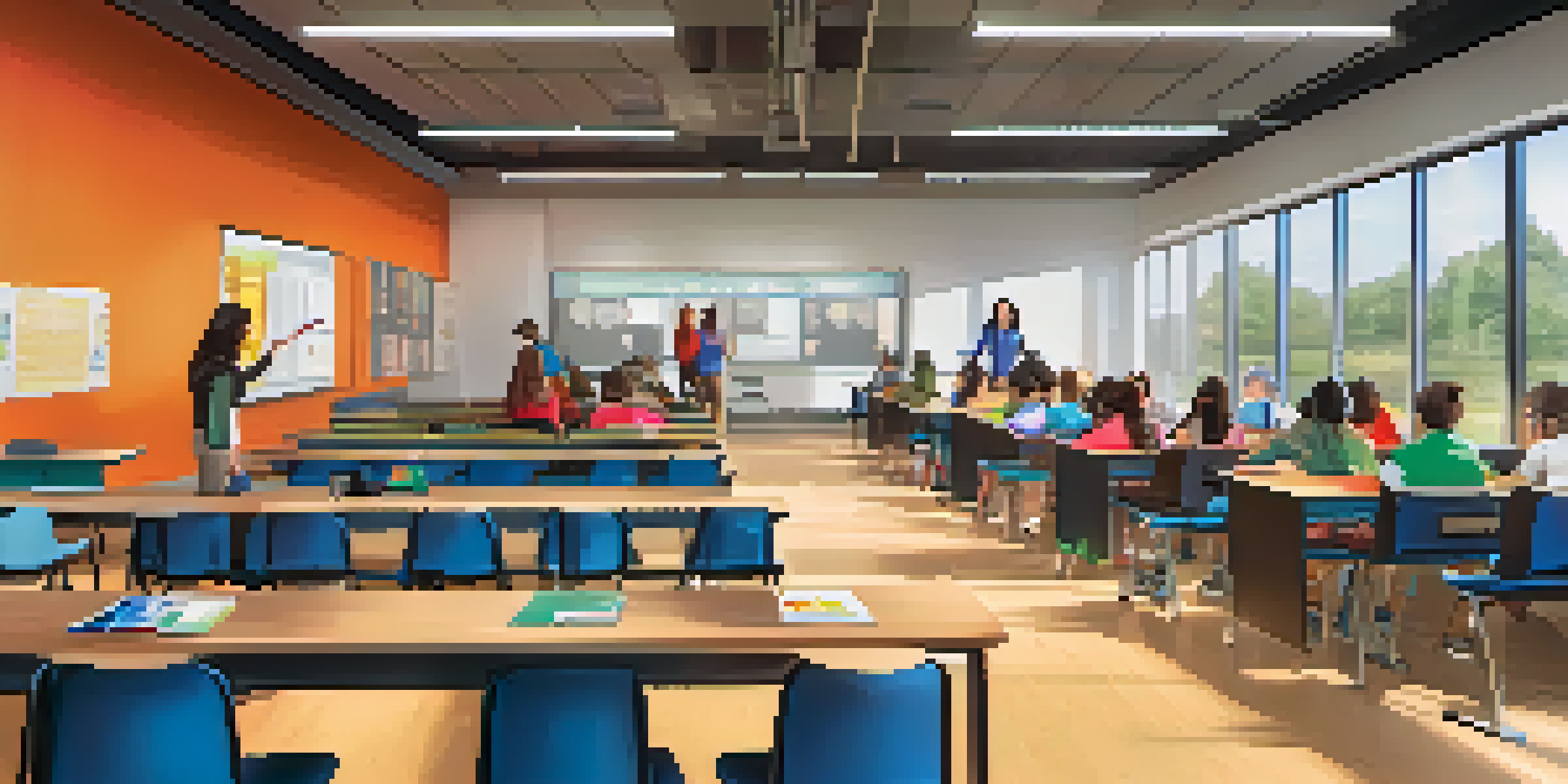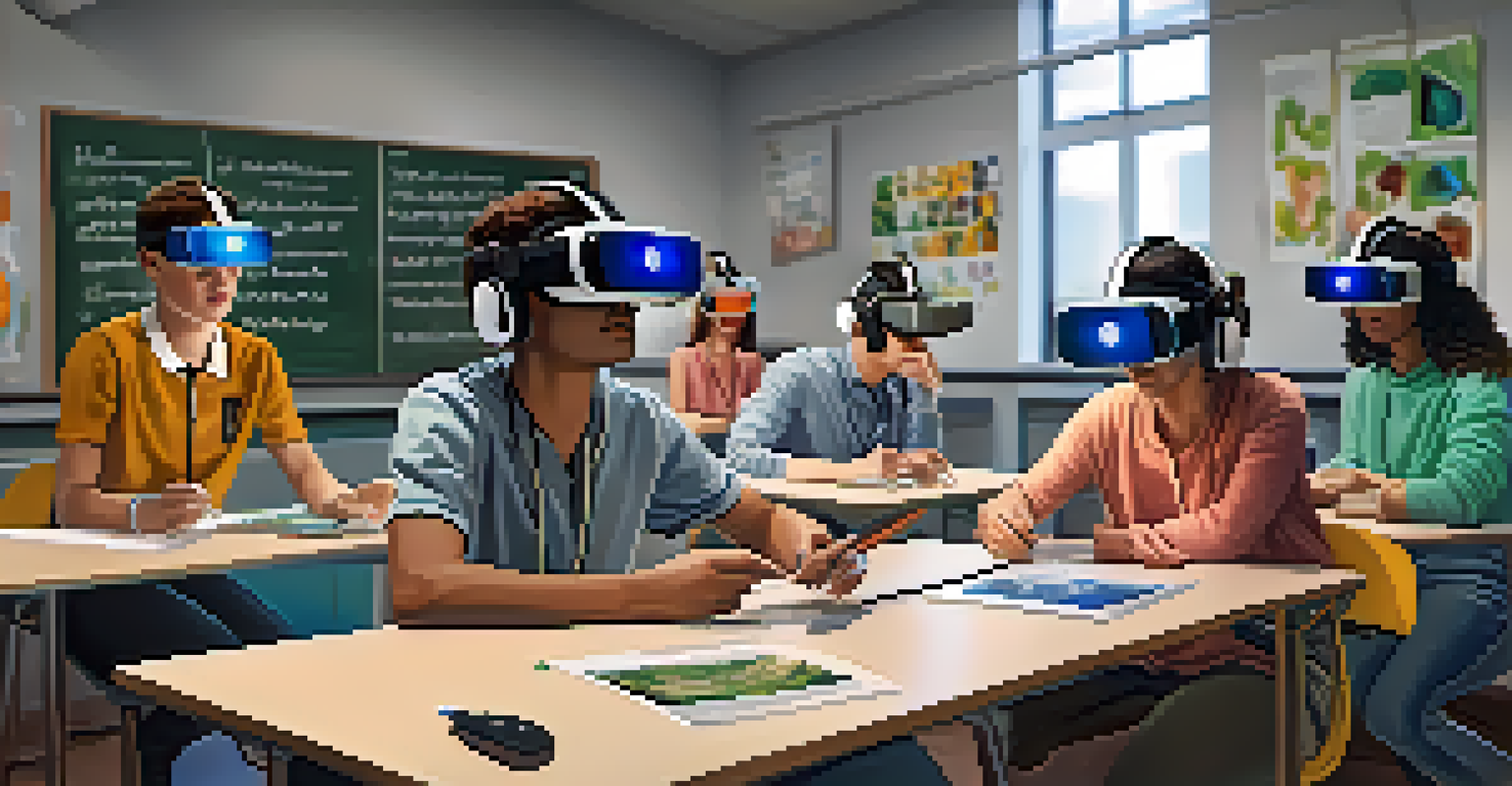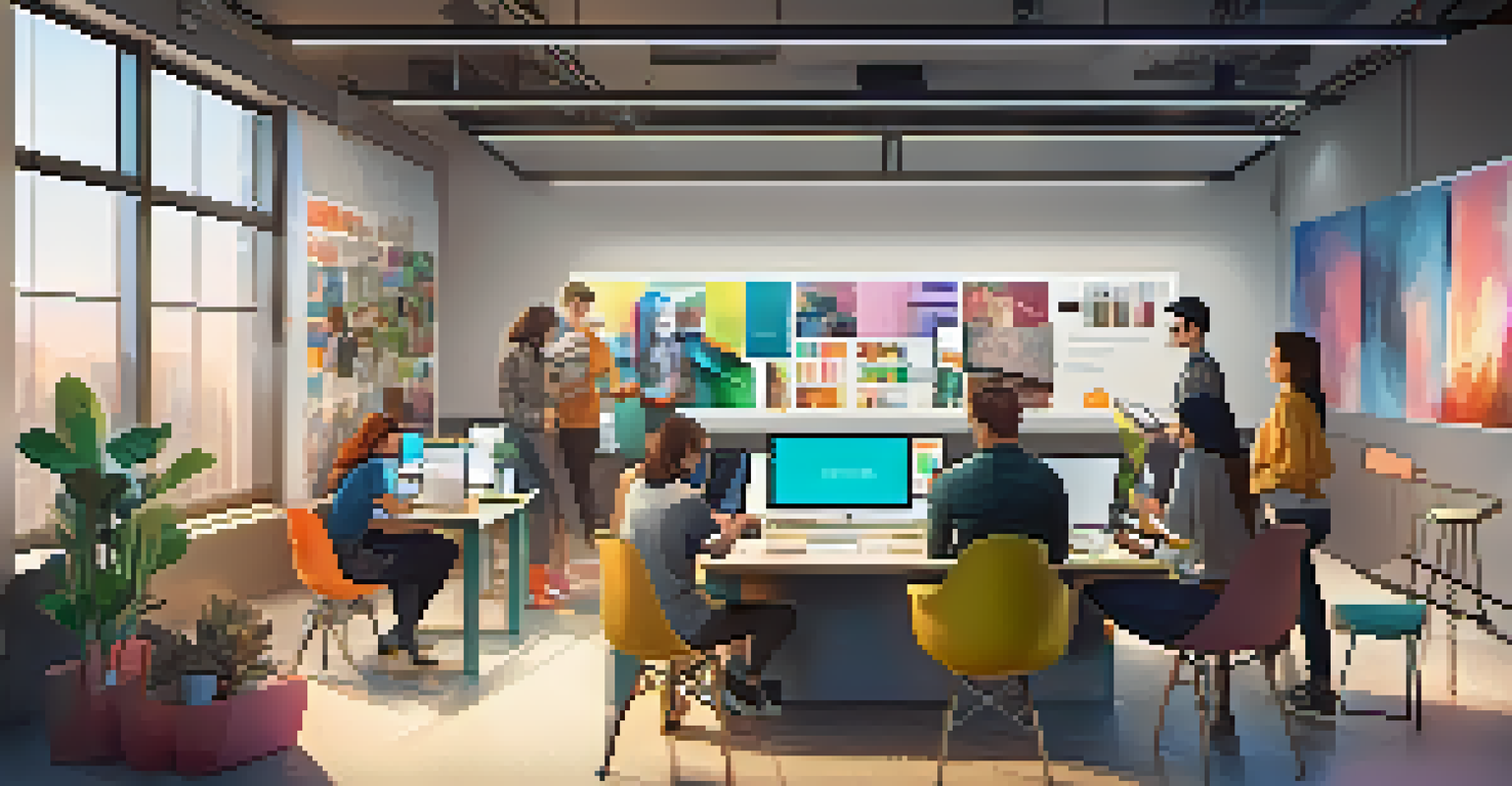Exploring the Future of Learning Spaces with Smart Tech

The Rise of Smart Learning Environments
In recent years, we've seen a significant shift towards smart learning environments. These tech-enhanced spaces are designed to foster collaboration and creativity among students. By integrating advanced tools and resources, educators can create a more engaging and interactive learning experience.
Technology will not replace teachers, but teachers who use technology will replace those who don't.
Imagine a classroom where students can easily connect their devices to a central smart board, allowing for seamless presentations and discussions. This not only makes lessons more dynamic but also encourages students to participate actively. The result is a more inclusive atmosphere where everyone feels empowered to share their ideas.
As smart technology continues to evolve, the potential for transforming educational spaces expands. Schools and universities are investing in these innovative solutions to keep pace with the ever-changing landscape of education, ensuring that they provide their students with the best possible learning experiences.
Personalized Learning through Tech
Personalized learning is at the forefront of modern education, and smart technology plays a critical role in this trend. With tools like learning management systems and AI-driven software, instructors can tailor lessons to meet the unique needs of each student. This individualized approach helps learners progress at their own pace, making education more effective.

For instance, consider a scenario where an AI program assesses a student’s strengths and weaknesses. It can then recommend specific resources or activities to help them improve in areas where they struggle. This targeted support not only boosts confidence but also enhances overall learning outcomes.
Smart Learning Enhances Engagement
Integrating technology in educational spaces fosters collaboration, creativity, and active participation among students.
As the demand for personalized education grows, institutions are increasingly adopting these technologies. By leveraging smart tech, educators can create an environment where every student has the opportunity to thrive and succeed.
Collaboration Redefined in Smart Spaces
Collaboration is a crucial skill for students to develop, and smart learning spaces are redefining how this happens. With features like interactive whiteboards, digital collaboration tools, and flexible seating arrangements, students can work together more effectively. These spaces are designed to break down barriers and encourage teamwork.
Education is not the filling of a pail, but the lighting of a fire.
Picture a group of students gathered around a digital table, brainstorming ideas for a project while accessing information from various online sources. This active engagement fosters not only critical thinking but also communication skills that are essential for future success. The traditional lecture-based model is giving way to a more collaborative approach.
As schools continue to incorporate these technologies, the importance of collaboration in education will only increase. Smart learning environments are paving the way for a new generation of learners who thrive on teamwork and collective problem-solving.
Integrating Virtual and Augmented Reality
Virtual and augmented reality (VR and AR) are making waves in the world of education, offering immersive experiences that were once unimaginable. These technologies allow students to explore complex concepts in a hands-on manner, deepening their understanding of the subject matter. From virtual field trips to interactive simulations, the possibilities are endless.
Imagine a biology class where students can don VR headsets to explore the human body from the inside. This engaging experience not only captures their attention but also helps them retain information better. When students can visualize what they are learning, it becomes much more meaningful.
Personalized Learning is Key
Smart technology allows educators to tailor lessons to individual student needs, promoting effective learning at their own pace.
As VR and AR technologies become more accessible, educational institutions are beginning to adopt them in their curricula. By integrating these tools, they are creating learning spaces that inspire curiosity and foster a love for exploration.
Enhancing Engagement with Gamification
Gamification is another powerful trend in smart learning spaces that boosts student engagement. By incorporating game-like elements into the educational experience, teachers can motivate learners to participate actively. Points, badges, and leaderboards can turn mundane tasks into exciting challenges.
For example, a classroom may implement a point system for completing assignments and collaborating with peers. This friendly competition encourages students to stay focused and work hard, as they see tangible rewards for their efforts. It’s a fun way to make learning more enjoyable.
As more educators recognize the benefits of gamification, the trend is likely to continue growing. By embracing this approach, schools can create vibrant learning environments that keep students eager to learn.
The Role of Data in Optimizing Learning Spaces
Data-driven decisions are becoming increasingly important in shaping effective learning environments. Smart technology enables educators to collect and analyze data on student performance and engagement. This information can be invaluable for identifying areas that require improvement or adjustment.
Consider a scenario where a school analyzes data from various classes to determine which teaching methods are most effective. Armed with this knowledge, they can refine their approaches and provide targeted support where needed. This continuous improvement cycle ultimately leads to better educational outcomes.
Data Drives Educational Improvements
Data analysis helps educators refine teaching methods and optimize learning environments based on student performance and engagement.
As education becomes more data-centric, institutions will need to invest in systems that help them make sense of the information they gather. By harnessing data, they can create optimized learning spaces that cater to the diverse needs of their students.
Sustainability and Smart Learning Environments
Sustainability is a pressing concern in today’s world, and smart learning environments can contribute to eco-friendly initiatives. By utilizing energy-efficient technologies and sustainable materials, schools can reduce their carbon footprint while providing a modern educational experience. This commitment to the environment resonates with students and encourages them to adopt similar values.
For instance, smart lighting systems can adjust based on natural light levels, minimizing energy consumption. Additionally, digital resources reduce the need for paper, aligning with sustainability goals. These small changes can make a significant impact over time.

As educational institutions increasingly prioritize sustainability, smart technology will play a vital role in this transformation. By creating eco-conscious learning spaces, schools can inspire the next generation to be mindful of their environmental responsibilities.
The Future of Learning: A Smart Approach
Looking ahead, the future of learning spaces will undoubtedly be shaped by smart technology. As advancements continue to unfold, we can expect even more innovative solutions that enhance the educational experience. From AI-driven personalized learning to immersive environments using VR, the possibilities are truly exciting.
It’s clear that the traditional classroom model is evolving. Educators and institutions are embracing change, recognizing that technology can play a pivotal role in facilitating effective learning. The goal is to create environments that are not only conducive to learning but also adaptable to the needs of students.
As we step into this future, collaboration between educators, technologists, and students will be essential. Together, they can create transformative learning spaces that empower individuals and prepare them for success in an increasingly complex world.